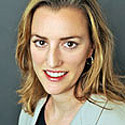03:46 PM
Societe Generale: Could it Have Prevented $7.2 billion fraud?
Jerome Kerviel, the Societe Generale trader who allegedly carried out a $7.2 billion fraud, confessed to police that he hid his activities from his superiors, and claimed both he and other employees had been carrying out risky trades since 2005. So how could Soc Gen have prevented the fraud?TowerGroup's Rob Hegarty, managing director of the Securities & Investments practice, says that as is usually the case with rogue traders, Kerviel had too much control.
"This shows a lack of supervisory procedures, and lax monitoring from the systems standpoint. Kerviel also had in depth knowledge of multiple areas of the company," Hegarty says.
The rogue trader managed to circumvent the bank's risk management system. But he was no computer genius. In fact, he didn't have to be, says Hegarty. "He wasn't even close to being one. He was just knowledgeable in checks and balance, he probably had a little technical knowledge but it was more a case of operational knowledge."
In fact, some analysts have questioned the wisdom of giving Kerviel the opportunity to move to the front desk after years working in the back and middle office where he learned all about Soc Gen's risk management system.
But Hegarty says it is usually a good thing to let employees move from the back office to the front desk. "They are valuable to the trading desk as they have knowledge of what happens after a trade from an operational standpoint. So this kind of move is actually very common. What shouldn't be common is not to have checks and balances in place to prevent knowledge from being mishandled," he says.
Hegarty suggests that Soc Gen should beef up its supervisory procedures, and strengthen its security access to some systems.
"Kerviel still had access to systems he used in the back office - old logins, or former colleagues' logins. There was a lack of separation of functions," he says.
Overall, risk managers need to be more proactive. "When markets decline, fraudsters tend to surface," Hegarty says. "The propensity to commit fraud increases as losses pile up. So risk managers need to raise their antenna."
Risk managers should also play a greater role in a firm's overall strategy, Hegarty adds. "I think many can follow the lead of what's happened at Merrill Lynch, where [new chief] John Thain is now making risk managers directly report to him. That's a significant step in giving risk management the visibility it needs."
On a lighter note, Hegarty points out that Kerviel's chief responsibility at Soc Gen was, ironically, to mitigate risk....Jerome Kerviel, the Societe Generale trader who allegedly carried out a $7.2 billion fraud, confessed to police that he hid his activities from his superiors, and claimed both he and other employees had been carrying out risky trades since 2005. So how could Soc Gen have prevented the fraud? Melanie Rodier has worked as a print and broadcast journalist for over 10 years, covering business and finance, general news, and film trade news. Prior to joining Wall Street & Technology in April 2007, Melanie lived in Paris, where she worked for the International Herald ... View Full Bio























